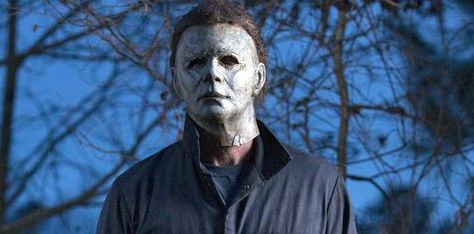“Halloween” Proves To Be An Enjoyable Emulation of The Classic 1978 Predecessor

mike myers (not shrek)
October 30, 2018
In a world of “Insidious” and “The Conjuring,” one piece of horror cinema remains iconic. No horror villain, and perhaps no villain at all, rivals Michael Myers of “Halloween,” the creation from film legend John Carpenter. Since the original film’s release in 1978, the power and hold on horror that “Halloween” has held has been unrivaled.
Unfortunately, the sequels in the franchise have failed to capture what makes the original terrifying. Forty years have gone by, yet Michael Myers remains as frightening as ever. The following films however, have sullied the once premier reputation of the franchise, have cast doubt on whether “Halloween” and Michael Myers could ever be successfully resuscitated.
Thus, this was the goal Jason Blum of Blumhouse Productions, the company behind “Get Out,” set out to realize when he embarked to complete a new film in the franchise. Enlisting a fresh team to tackle the film, including Danny McBride, a notably successful comedic actor, Blum’s approach was unique yet untraditional, allowing suspicions of whether the film would succeed or not to develop.
Perhaps out of necessity or design, the one thing “Halloween” does not fail to do is entertain. Set 40 years after the events of the original film, the movie ignores all predecessors and proceeds with a direct timeline of Laurie Strode, the role reprised by Jamie Lee Curtis, still in recovery after the events of Halloween night 40 years ago. When Michael Myers escapes from prison, the showdown between hero and villain is set, giving rise to a battle which has been decades in the making.
A new take on the original film, this storytelling wrinkle is part of what makes it enjoyable. In some sense, the film is part “Halloween” but also part “The Predator.” The name of “The Boogeyman,” given to Michael Myers, is aptly used as the film constructs his character very much like “The Predator” does with its titular villain. Both powerful foes are treated with the right amount of caution, never being shown too much to give away the mythos that gives them their power.
Ultimately though, this wrinkle proves to be one of few original things in director David Gordon Green’s product. The film instead emulates many successful components from its predecessor. In a sense, “Halloween” is the series’ “Star Wars: The Force Awakens,” a film that feels very similar to the iconic original. While “Halloween” is more successful because it emulates the craft and is more original in actual storytelling, it immediately bares comparison to the original, a comparison that will never tilt its way.
“Halloween” is enjoyable, blending scenes of dialogue that instill an 80’s vibe in the film with modern jump scares and classic Michael Myers tracking shots, creating a product ultimately worthy of the franchise’s fame. The overall limits to originality hinder the film as a whole, however, it could be argued that too much originality would be to the film’s detriment. After all, the 1978 film’s formula was never broken, and by following it, Jason Blum has delivered a “Halloween” that lives up to the promises set years ago.










